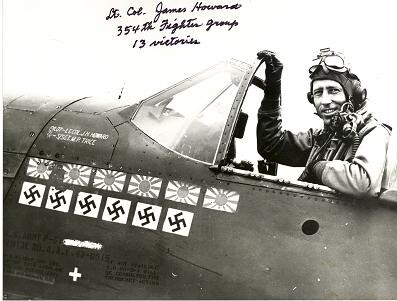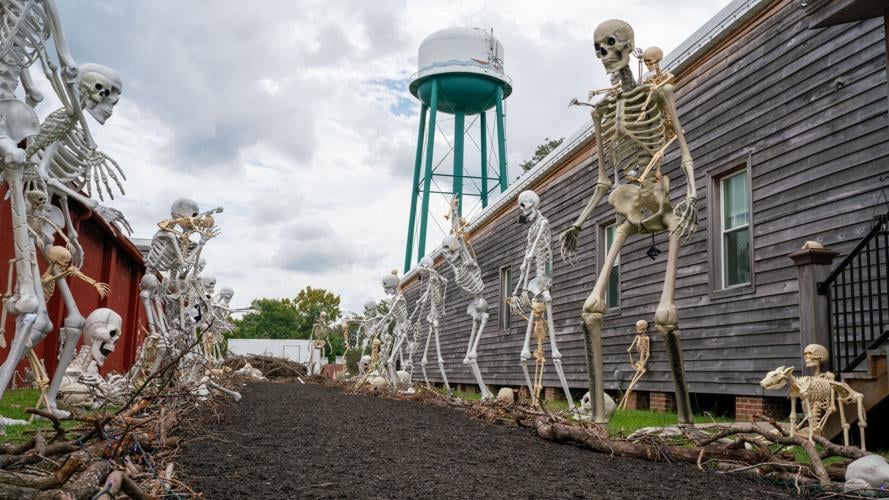A WWII Media Sensation and Author
by Melissa LaScaleia
Howard Avenue in the Market Common is named after a notable member of the United States Air Force. Born to American parents in Canton, China on April 13, 1913, James Howell Howard moved with his family to St. Louis, Missouri in 1927.
He graduated from Pomona College in Claremont, California in 1937, intending to pursue a career in medicine. But the thrills of a military life during World War II called to him, and he became a P-40 fighter pilot with the famous American Volunteer Group— the Flying Tigers, in Burma, instead.
He flew 56 missions and was credited with shooting down six Japanese airplanes. Following that group’s disbandment, James returned to the U.S., joined the Air Force, and in 1943, was promoted to major and given command of the 356th Fighter Squadron in the United Kingdom.
On January 11, 1944, James made the choice that would earn him a promotion to lieutenant colonel, and the United States military’s highest decoration— the Medal of Honor. He is the only fighter pilot in the European Theater of Operations in World War II to receive this distinction.
He single-handedly flew his P-51 Mustang into some thirty Luftwaffe fighters that were attacking a formation of American B-17 Flying Fortress bombers over Oschersleben, Germany. For more than a half-hour, James defended the bombers of the 401st Bomb Group against the swarm of Luftwaffe fighters, attacking the enemy airplanes and shooting down six.
At a press conference the following week, James described the attack to reporters, including the BBC, the Associated Press, CBS reporter Walter Cronkite, and Andy Rooney, then a reporter for Stars and Stripes. The story was a media sensation, prompting articles such as “Mustang Whip” in The Saturday Evening Post, “Fighting at 425 Miles Per Hour” in Popular Science, and “One Man Air Force” in True, The Man’s Magazine. The New York Times reported on January 19, 1944, that after James’ plane ran out of ammunition, he continued to dive on enemy airplanes.
“An attack by a single fighter on four or five times his own number wasn’t uncommon,” wrote a fellow World War II fighter pilot in his postwar memoirs of James’ performance. “But a deliberate attack by a single fighter against thirty plus enemy fighters without tactical advantage of height or surprise is rare almost to the point of extinction.”
After he retired, James told his great military exploits in his autobiography, Roar of the Tiger, as well as founding a successful systems engineering business, Howard Research. James passed away in 1995, and is buried in Arlington National Cemetery.

















